There are much fewer people who like to fish in the current in winter than fishermen who visit stagnant bodies of water. Fishing in flowing waters is associated with certain difficulties and requires different approaches to the choice of gear and the fishing process itself.
- Difficulties and nuances of ice fishing
- Winter tackle for fishing on the current
- What kind of fish is caught in the winter in the course
- How to properly look for fish in the winter on the current
- How to feed properly and what
- Types of lures and baits for fishing on the current
- River equipment for winter fishing on the current
- Fishing rod under the jig
- Stationary fishing rod
- Stretch tackle
- Tackle for winter lure
- Fishing with live bait
- Catching on a garland
- Fishing on the course of different types of fish
- Fishing for pike on the river
- Roach
- Perch
- Fishing for bream in winter on the current
- Fishing for crucian carp in winter on the river
- Guster
- Dace
- Catching walleye in winter from ice on rivers with the current
- Bersh
- Grayling
- Interesting tackle for fishing in the winter on the current
- Поделиться ссылкой:
Difficulties and nuances of ice fishing
The most unpleasant thing when fishing on the current is that the jet “blows” the loop out of the line, which leads to the loss of contact with the bait and the sensitivity of the tackle. This applies to all methods of fishing – and fishing with a jig and
winter lure . The way out of this situation is to make the lures and tackle heavier. All elements of the tackle should be more powerful – both the line and the nod and the rod itself.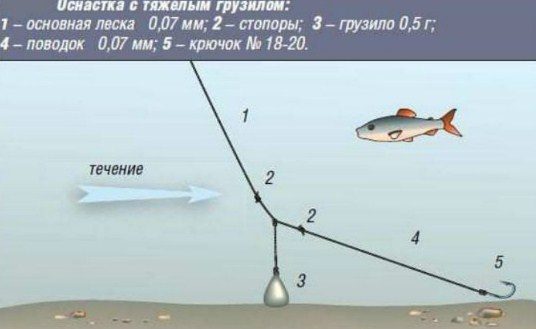
- in running water there is no such deficiency of oxygen dissolved in water as in stagnant water bodies, due to which the fish remains active throughout the winter period;
- a larger fish usually keeps on the current , since the little things do not have enough strength to stay on the stream;
- fish reacts much faster to bait ;
- ice in flowing waters is always thinner , so you don’t have to spend so much effort drilling holes;
- the fish caught on the hook in the reservoirs by the confluence resists much more , which makes the angler more thrilling.
Serious disadvantages of winter current fishing include the following:
- uneven force of the current, which is why you have to constantly readjust the gear;
- the need to use more groundbait;
- frequent hooks of lures, especially lures and balancers , to the lower edge of the ice in the hole.
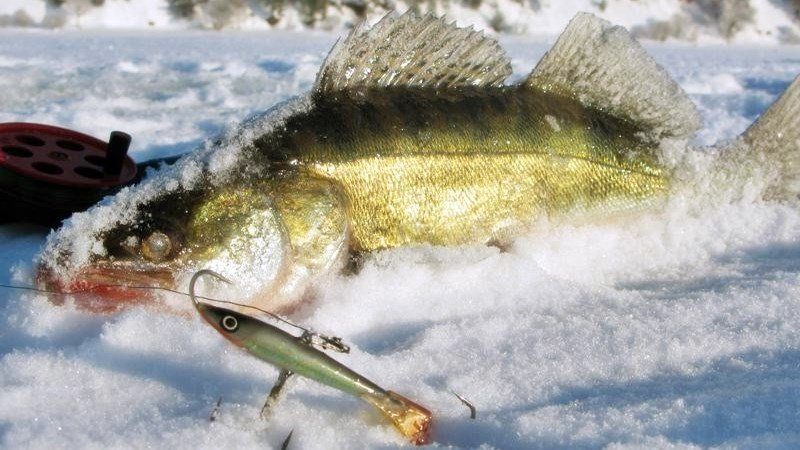
Attention! Ice in flowing water bodies is always thinner, and its thickness, as a rule, is uneven. Therefore, you should be extremely careful when moving on ice.
Winter tackle for fishing on the current
Anglers practicing fishing in flowing waters use the following tackle:
- fishing rods for running fishing with jig designed for fishing with natural baits;
- fishing rods for reeling ;
- fishing rods for stationary fishing with a sinker and hooks or jigs on leashes;
- fishing rods for stretching;
- fishing rods for winter lure;
- winter girders;
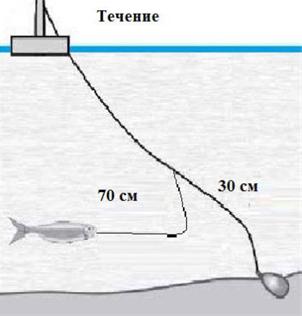
- bottom gear for burbot fishing.
https://tytkleva.net/zimnyaya-rybalka/udochki.htm
What kind of fish is caught in the winter in the course
Basically the same fish is caught in the current as in stagnant bodies of water, but with a slight shift in priorities. For example, if in the lakes they catch the bream, then in the rivers bream. The younger brother of the pike perch, the bersh, can only be caught in a flowing water body. Otherwise, you can catch the following fish along the current:
- roach;
- perch, but in smaller quantities than in stagnant bodies of water;
- bastard and bream ;
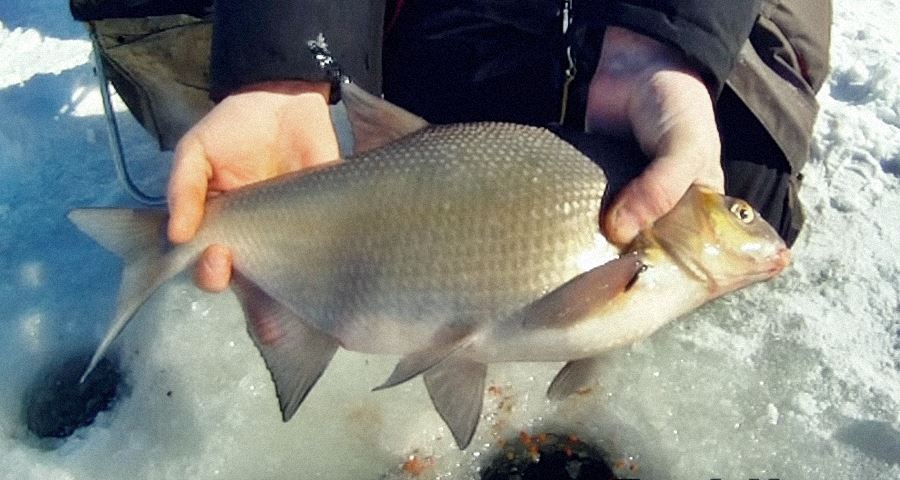
- guster;
- blue bream;
- sopu;
- ruff;
- pike perch;
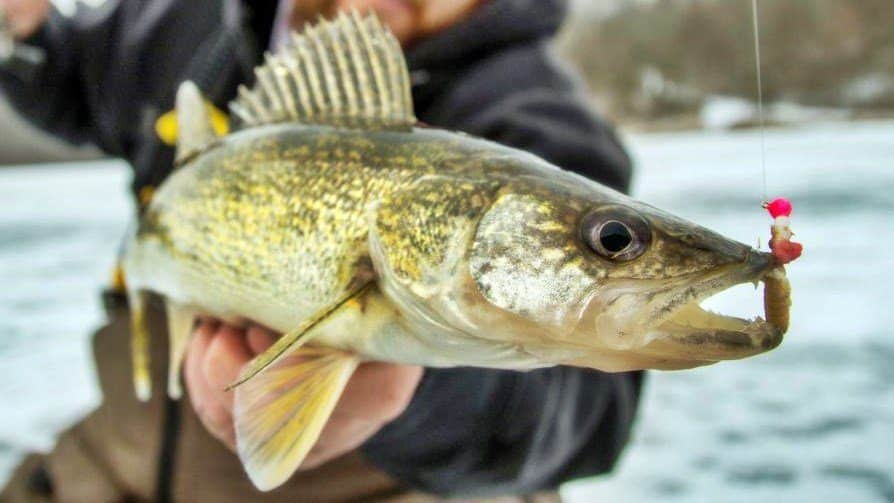
- pike, maybe not so often, but of a larger size.
How to properly look for fish in the winter on the current
To catch a fish, you need to find it. It can be difficult at times. Even with bait, it is not always possible to achieve a positive result.
Healthy! If the fisherman knows the pond from summer fishing, then he should fish in the same places where he pecked in the summer. During the dead winter season, you should not fish in shallow water and in areas where there is no current.
If the place is not too familiar, then one should look for certain anomalies of the bottom topography. This can be done by examining the coastline. Usually, there are holes under steep banks, beaches indicate shallow water, and reverse currents may be present at sharp river bends. Fishing in a strong current, as a rule, is not very promising. Not only do many difficulties arise in the process of fishing, but the fish do not like such places too much. It makes more sense to look for fish by moving from bank to channel. Closer to the shore, it is more likely to find an uneven bottom, and a shallow dump is an attractive place for some species of fish.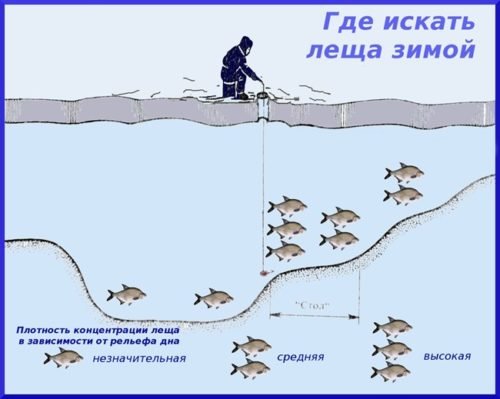
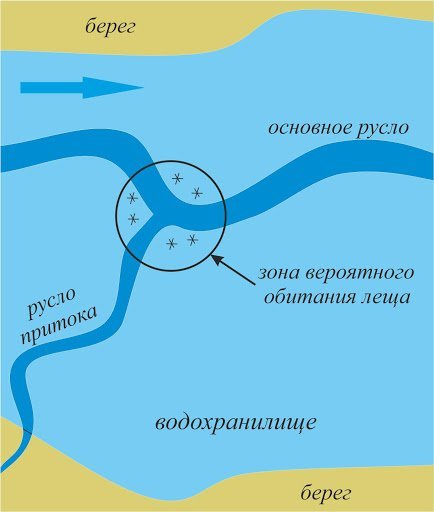
How to feed properly and what
Oddly enough, most anglers believe that
bait during winter does not work as efficiently as in summer. In the best case, it is possible to achieve the approach of a small flock of white fish, and even then not in every hole. But with a bad bite, the bait still helps out. There are two ways to give bait: by installing a stationary feeder upstream or by feeding it with bait balls.
It is not so easy to make a ball of the desired consistency – it is necessary that it does not crumble on the way to the bottom and does not lie in a lump, falling on it. Small portions of groundbait are used.
How to fish in the winter with a feeder: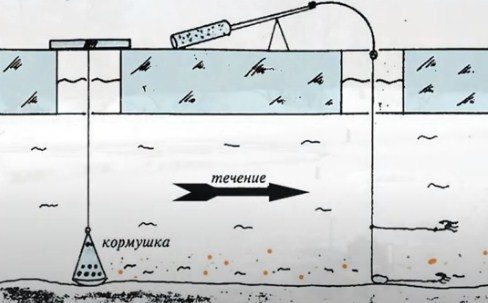
Important! In winter, bait should contain a minimum of flavors or even exclude them altogether. Hemp has proven itself well as a supplement.
Types of lures and baits for fishing on the current
As lures for fishing with natural baits, jigs are used, as a rule, heavy – tungsten. For beznasadochnoy fishing is most often used
as hell , and tungsten. The main thing is to choose the weight of the jig suitable for specific conditions.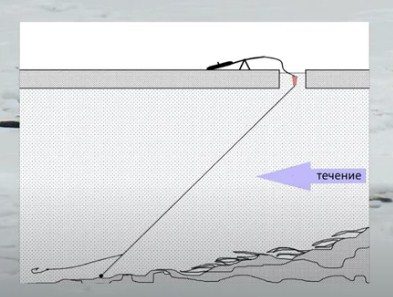
, worms, maggots, burdock moth larvae.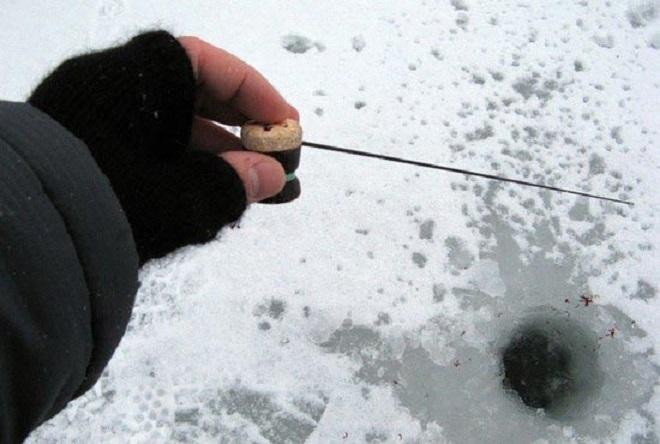


River equipment for winter fishing on the current
Fishing rod under the jig
The most common tackle for ice fishing is considered to be a fishing rod equipped with a jig as bait and a nod that ensures the play of this jig and fixes the bite of the fish. Regular balalaikas are too lightweight for current fishing – they have to be replaced with rods with a handle. The nods are much more powerful than fishing in stagnant waters. The fishing line, accordingly, is also thicker.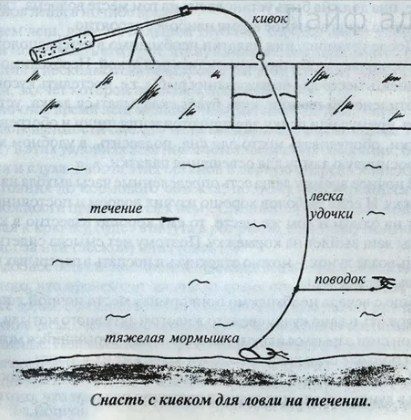
Stationary fishing rod
A rod for fishing in a baited place must be equipped with a reel and have legs with which it is installed on the ice. A fastener is tied at the end of the fishing line so that weights can be changed during the fishing process.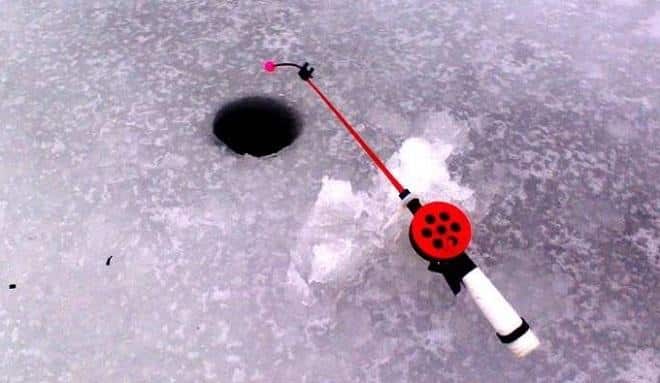
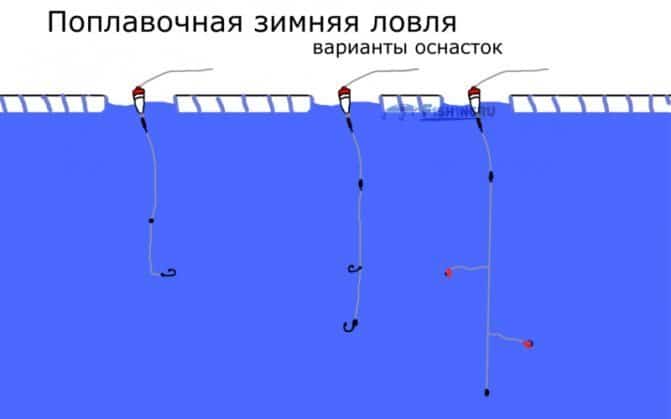
Stretch tackle
Reach fishing is to release the bait a certain distance from the hole, and then lead it against the current with stops and possible animation. The tackle for such fishing consists of a long (up to 1 meter) fishing rod and a reel with a fishing line, the length of which can reach 50 meters. An olive of the desired weight is put on the fishing line, fixed in one way or another, after which a long leash with a hook or jig is tied through a swivel.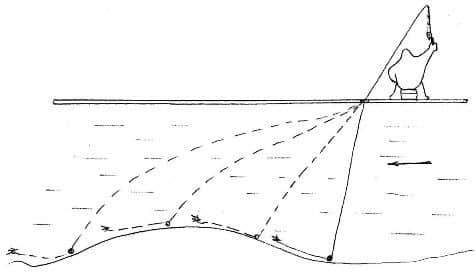
- Lower the load to the bottom.
- They support it so that it melts to the desired distance – usually 2-3 meters.
- Repeating this operation, the amount of fishing line required from the angler’s point of view is vented from the reel.
- Begin to slowly drag the rig upstream.
- Periodically make stops and play in one place.
- The bite is recorded by the nodding behavior.
Tackle for winter lure
Use the same rod as in stagnant bodies of water. The following requirements are imposed on baits:
- the angle of entry into the water should be as minimal as possible, which is achieved by the correct selection of the weight of the bait;
- during the course, the spoon should not rotate around its axis;
- if the current is not strong, heavy balancers can be used.
Fishing with live bait
In reservoirs with the current, predatory pike, pike perch and perch are caught on girders, and burbot – on donks. The equipment of the vents is usual. Particular attention is paid to the mass of the cargo – live bait should be on the right horizon.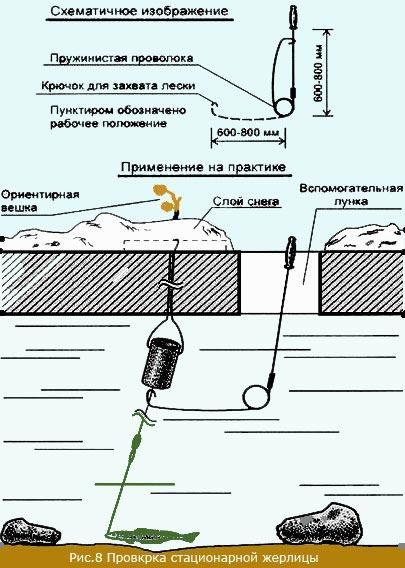
Catching on a garland
A garland is called a rig with several hooks or jigs that are sequentially located on the fishing line. Its purpose is to fish several horizons at the same time. In winter, it is used in a weak course. Below there is a load or a heavy jig, above there are several hooks or jigs. You can knit them to the main line or on short leashes, tied from a thinner monofilament. A nod is used as a bite lock.
Fishing on the course of different types of fish
Fishing for pike on the river
Pike can be caught with artificial baits and live bait. To catch predators, they choose places with a slow or reverse flow, holes, areas around flooded snags, etc. It should be borne in mind that in winter the pike is often kept at half-water.
Roach
Roach in the current is caught by all known methods: walking fishing, stationary fishing with bait, a stretch and a garland.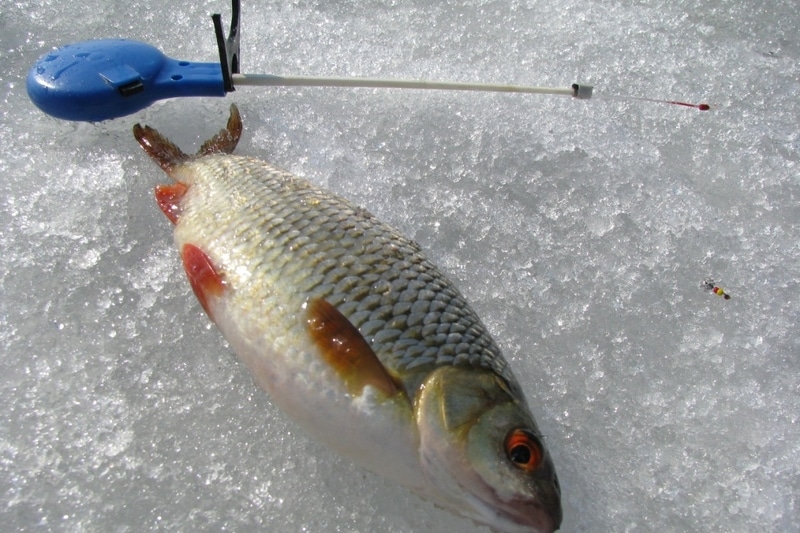
Perch
The perch, like the pike, avoids strong currents. The best places to catch it are bottom areas with variable topography. You can fish with both natural and artificial baits.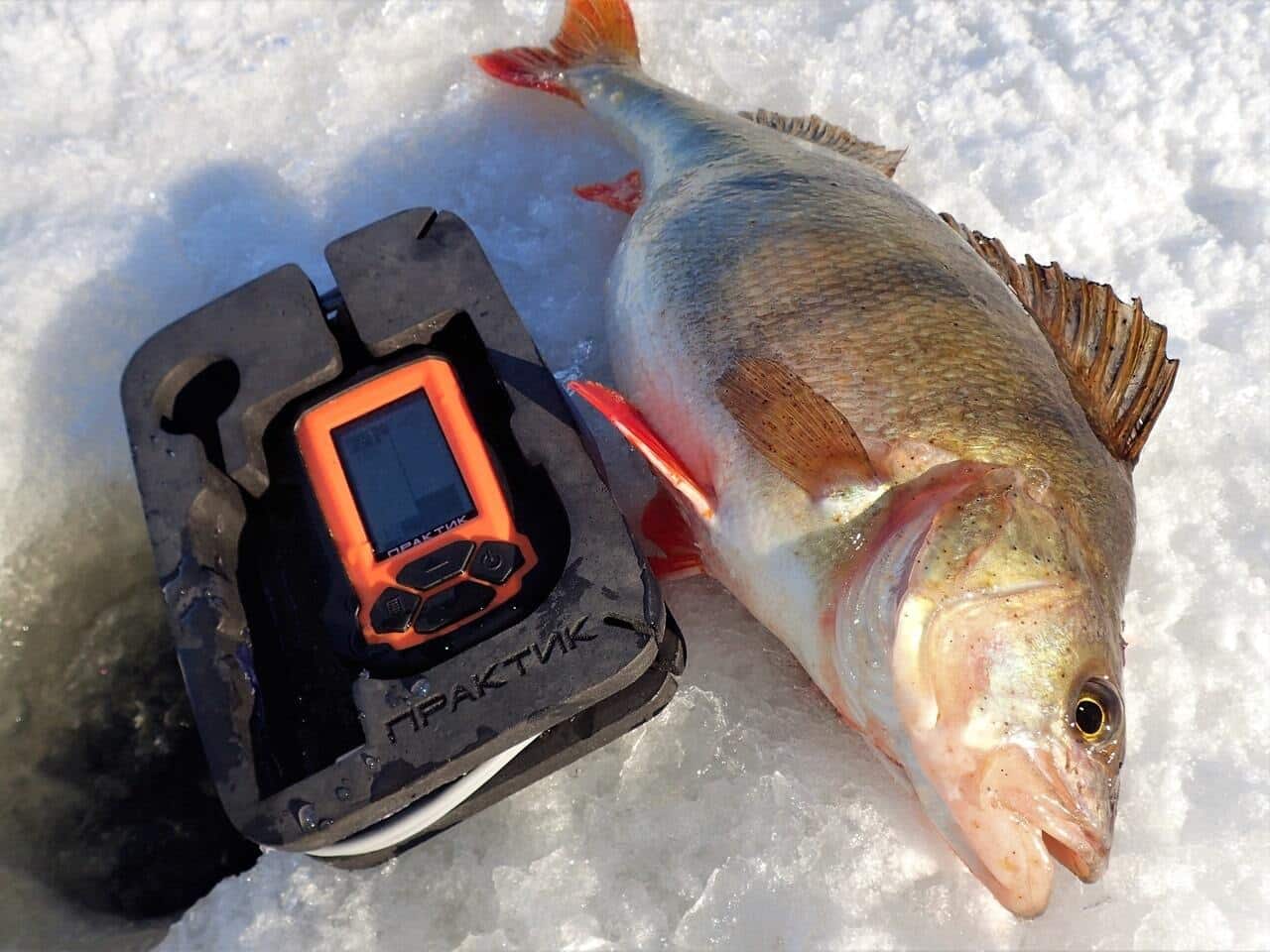
Fishing for bream in winter on the current
Large bream can also hold on to a strong stream, the breeder chooses quieter places. The latter is caught in a running way and stationary with bait. For large bream, it is better to use reach fishing. As bait, bunches of bloodworms are used, which are prepared in advance.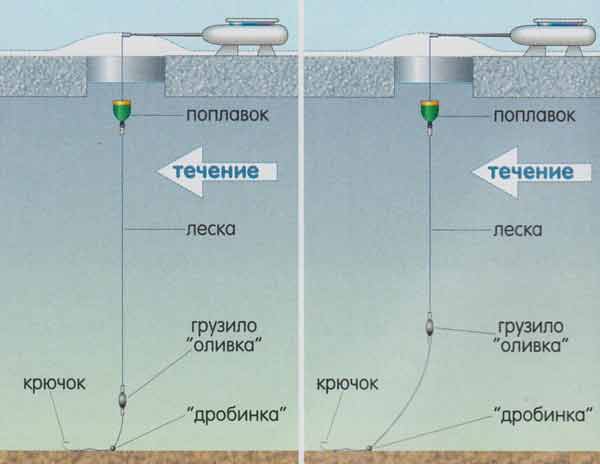
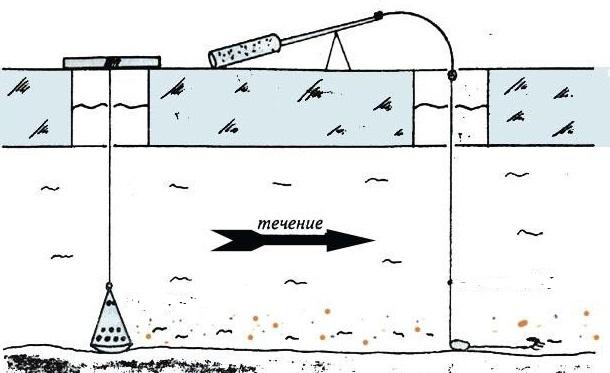
Fishing for crucian carp in winter on the river
Fishing for crucian carp in winter is not very common, especially in flowing water bodies. But you can still catch him. You should choose places with the weakest currents or no currents at all. It is desirable that at the bottom there are remnants of aquatic vegetation, but in no case rotting. Some types of aquatic plants do not stop growing even under ice. It is in such places that you need to look for crucian carp. The tackle should be delicate with thin line and a small jig. If successful, the prey will be the goldfish – its golden relative sleeps during this period, buried in the silt.
Guster
Gustera lives in the same place as the scavenger and roach. No special delicacies are required when catching it.
Dace
Eltsy also live in stagnant bodies of water, but in rivers they reach a larger size and can flock into flocks. If you can find a schooling dace, it will delight the angler with “evil” bites and decent resistance when playing. In addition, dace is an excellent live bait for hunting a predator, it is much more tenacious than the same roach and, perhaps, due to its taste, it attracts pike perch, bersh, perch and pike better.
Catching walleye in winter from ice on rivers with the current
Pike perch, like perch, should be looked for in areas of the bottom with relief anomalies, as well as at the channel dump. Where the current is not too strong, balancers and VIBs can be used. A good result is obtained by jigging with a live bait set on a hook, although silicone baits work during periods of predator activity.
Bersh
Bersh, unlike pike perch, prefers areas with strong currents and great depths. Although he bites on artificial baits, small fish is what he likes most of all.
Grayling
Grayling slides into holes for the winter, but occasionally goes into shallow water. His usual campsites are quiet places behind large stones next to the rifts. Catching grayling in winter requires a certain physical preparation from the angler – after all, you have to make your way alone along the snow-covered ice of the rivers. Find a fish, you can catch it with an ordinary jormus fishing rod or with a simple donkey, which you can periodically play along with. The most interesting fishing for grayling on a small spoon with an artificial fly tied above it. Of the bait, grayling prefers bark beetle or burdock larvae. If the fisherman has not managed to stock up on such baits, he has to catch with bloodworms and maggots.
Interesting tackle for fishing in the winter on the current
Of the unusual rigs for winter current fishing, it is worth mentioning the sliding reel. It can be used for stationary whitefish and broach fishing. 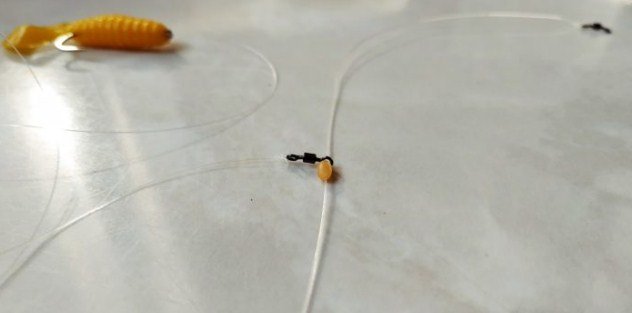
[/ caption] The effectiveness of this rig is achieved due to the fact that the leader sliding relative to the main fishing line, due to the turbulence of the flow, either rises higher or falls below , thereby attracting fish standing in different layers of water. As an exotic fishing, it is worth mentioning drop-shot pike perch fishing from the ice. The principle of operation is the same as when fishing in a stretch. Fishing in the current in winter allows you to achieve good results only if the angler understands its fundamental differences from fishing in stagnant bodies of water.

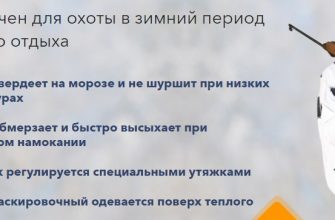
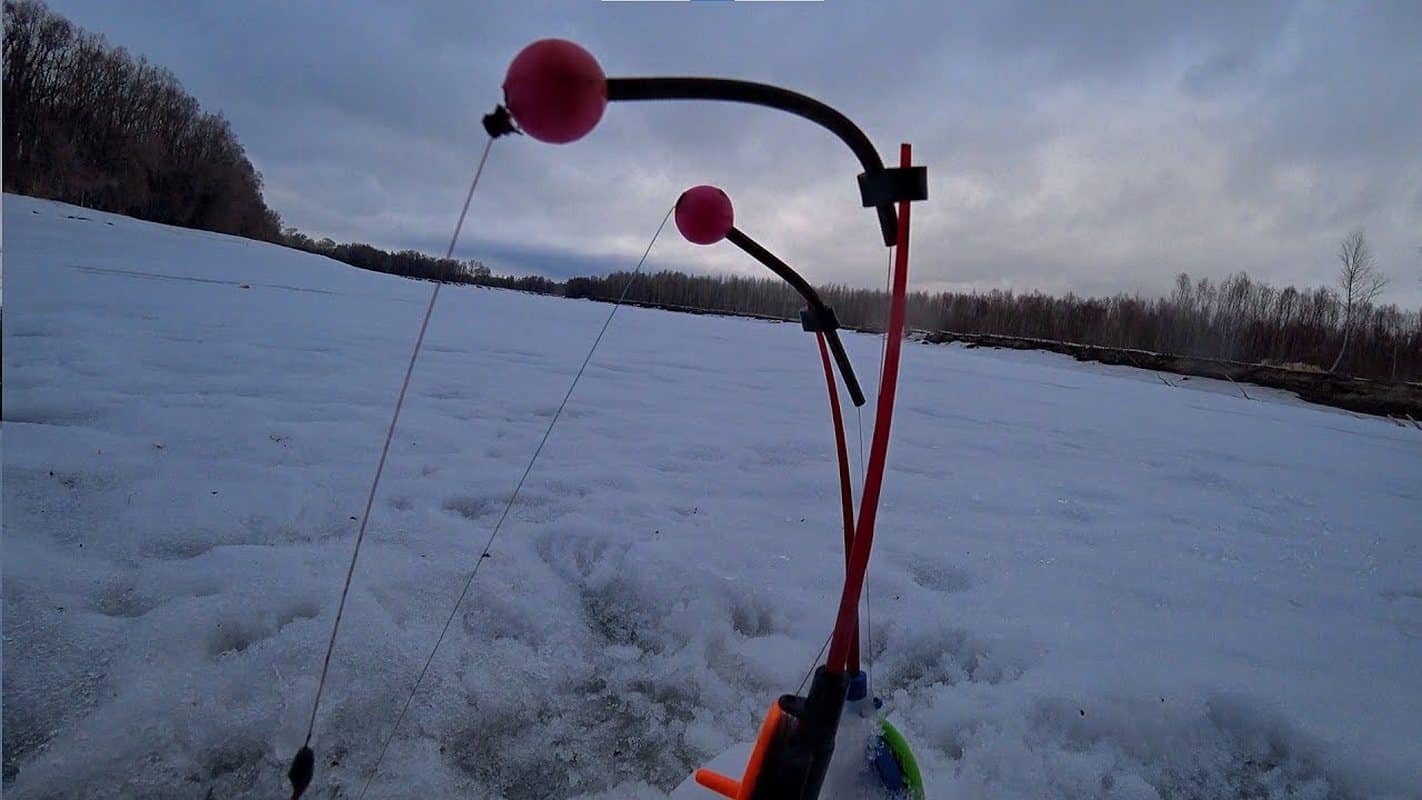

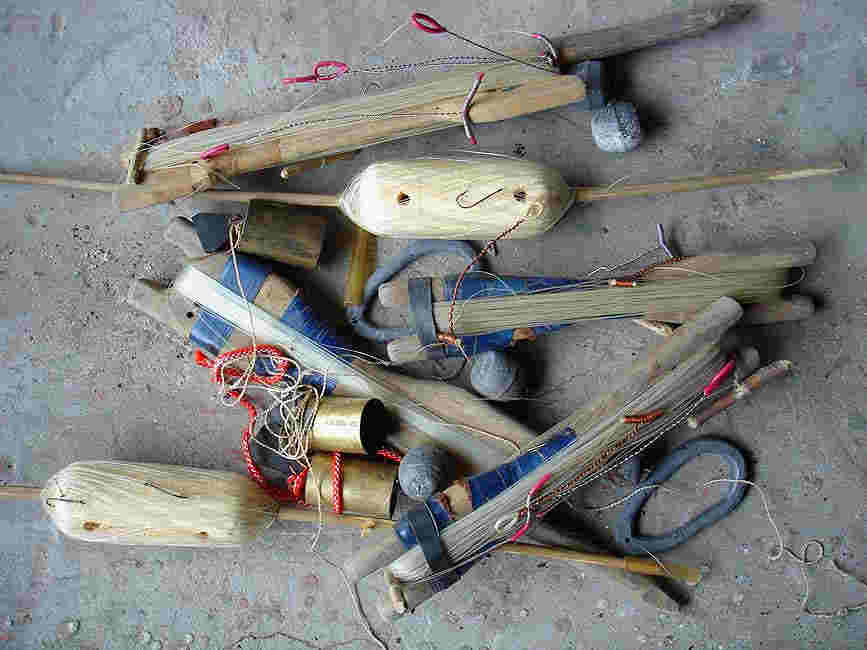
Здравствуйте! Меня зовут Иван. Я партнер сервиса по продвижению сайтов в сети Интернет. Мы предлагаем самые низкие цены в Интернете. Например, на тарифе «Пробный» Вы получите 300 вечных трастовых ссылок на Ваш сайт всего лишь за 150 рублей.
Воспользовавшись нашими услугами, Вы с минимальными расходами улучшите свои позиции в поисковой выдаче и получите прирост поискового трафика и посещаемости.
Если Вас заинтересовало мое предложение, то я буду очень благодарен, если при регистрации в сервисе Вы воспользуетесь моей партнерской ссылкой: https://bit.ly/3WBSjkg Извините, если отвлек Вас от работы. С уважением Иван.